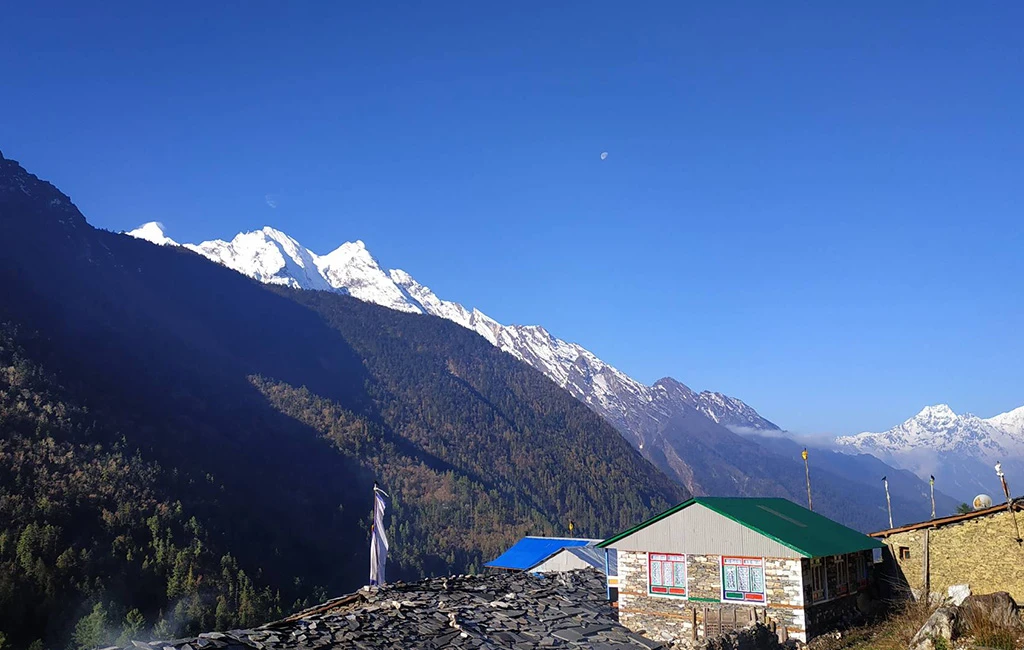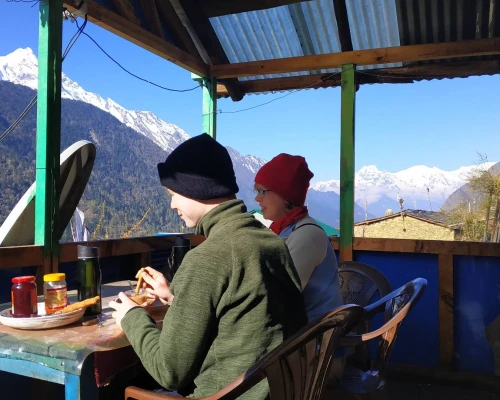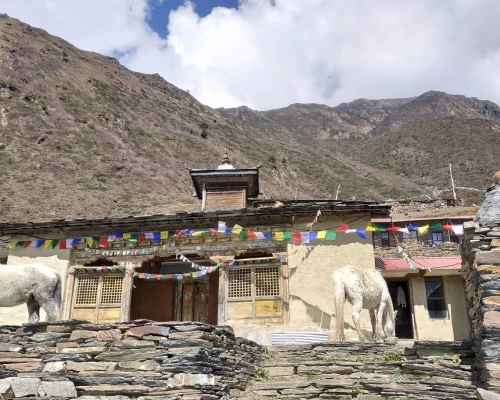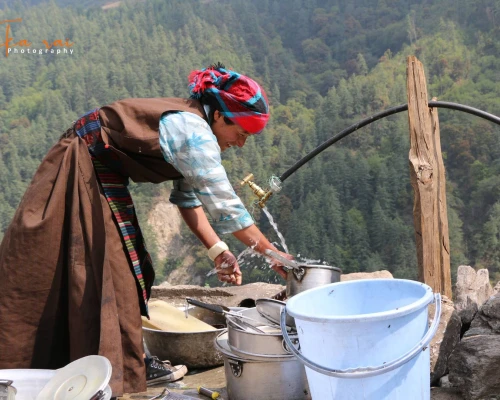Trip Highlights
- Explore the hidden valley of Tsum, a sacred land rich in Tibetan Buddhist culture and traditions.
- Visit ancient monasteries like Mu Gompa, Rachen Gompa, and Dephyudonma Gompa, surrounded by peaceful mountain scenery.
- Discover the legendary Milarepa Cave, where the Tibetan saint Milarepa is said to have meditated.
- Enjoy stunning views of Ganesh Himal, Sringi Himal, and Himalchuli throughout the trek.
- Experience warm hospitality in traditional Tsumba villages through local teahouses and homestays.
- Walk along trails lined with mani walls, prayer wheels, and colorful chortens, reflecting deep spiritual life.
- Combine your adventure with the Manaslu Circuit for a longer and more diverse Himalayan experience.
Tsum Valley Trek Overview
The Tsum Valley Trek takes you into one of Nepal’s most peaceful and spiritually rich regions, hidden deep within the Manaslu Conservation Area. Known as the “Hidden Valley of Happiness”, Tsum Valley was opened to trekkers only in 2008, making it one of the least-explored areas of the Himalayas.
This 14 days journey offers more than mountain views, it is a walk through ancient Buddhist culture, traditional stone villages, and sacred monasteries untouched by time. The valley is home to the Tsumba people, whose way of life, language, and customs are closely linked with Tibet. Along the trail, you will visit centuries-old monasteries such as Rachen Gompa and Mu Gompa, explore the Milarepa Cave, and walk past mani walls and chortens that tell stories of devotion and faith.
The trek begins with a scenic drive from Kathmandu to Machha Khola, following the Budhi Gandaki River, and gradually climbs through terraced fields, forests, and remote villages. As you move higher into the valley, the landscapes open up to wide plains surrounded by snow-covered peaks like Ganesh Himal, Himalchuli, and Sringi Himal.
The Tsum Valley Trek is a moderate-level adventure suitable for those who enjoy quiet trails, authentic cultural experiences, and off-the-beaten-path destinations. With basic teahouses, friendly locals, and serene mountain scenery, it’s a rewarding journey for trekkers looking for both adventure and inner peace.
Spiritual and Cultural Significance of Tsum Valley
Tsum Valley is often called a “Beyul”, meaning a hidden valley of happiness and peace in Tibetan Buddhism. According to legend, it was blessed by the great Buddhist saint Guru Rinpoche (Padmasambhava) as a sacred refuge for spiritual seekers. Even today, the valley remains a place of deep faith, where religion shapes every part of daily life.
As you walk through Tsum Valley, you will see long mani walls, prayer wheels, and colorful chortens lining the trails. The air carries the sound of monks chanting and the flutter of prayer flags in the wind. The local Tsumba people follow ancient Buddhist traditions and speak their own dialect closely related to Tibetan language. Their villages are home to some of the oldest monasteries in Nepal, including Mu Gompa, Rachen Gompa, and Dephyudonma Gompa, each holding centuries of history and spiritual practice.
One of the valley’s most sacred places is the Milarepa Cave, where the great Tibetan yogi Milarepa is said to have meditated in the 11th century. Pilgrims and trekkers alike visit this site to pay respect and feel the peaceful energy of the place.
Tsum Valley is also known for its strong belief in non-violence, locals do not kill animals within the valley, considering all life sacred. This tradition has kept the valley pure and preserved its harmony with nature.
Walking through Tsum feels like stepping into a living monastery, where every path, stone, and mountain carries spiritual meaning. It’s not just a trek, it’s an experience of stillness, compassion, and connection with ancient Himalayan wisdom.
Who can do the Tsum Valley Trek?
The Tsum Valley Trek is a moderate level trek, making it suitable for most people with a reasonable level of fitness and a sense of adventure. You don’t need to be an experienced trekker, but you should be comfortable walking for 5–7 hours a day on uneven trails and gentle climbs.
If you enjoy quiet trails, cultural exploration, and nature rather than crowds or luxury, this trek is perfect for you. It is ideal for trekkers who want to experience authentic Himalayan life like visiting remote monasteries, staying in local homes, and learning about the Tibetan Buddhist culture that defines this valley.
The highest point of the trek is Mu Gompa (around 3,700m), which is well below the extreme altitudes of routes like Everest Base Camp. So, while basic acclimatization is needed, the risk of altitude sickness is relatively low.
Good health, regular walking habits, and a positive mindset are more important than physical strength. With proper pacing, rest, and support from your guide, even first-time trekkers can complete the journey comfortably.
Tsum Valley Trek Cost – What You Should Know
The Tsum Valley Trek costs between USD 1,600 and USD 1,800 per person, depending on your group size and the level of services included. This price generally covers accommodation, meals during the trek, transportation, trekking permits, and a licensed guide.
At Himalayan Joy Adventure, we offer fair and transparent pricing for the 14 days Tsum Valley Trek. Larger groups can enjoy lower rates, while solo or smaller groups receive personalized service and flexible itineraries. No matter your group size, we maintain the same high standard of care, comfort, and safety throughout your trip.
Please see the detailed cost breakdown below for more information.
| No. of Pax | Starting Price (Per Person) |
|---|---|
| 1-2 pax | US$1800 |
| 3-5 pax | US$1750 |
| 6-10 pax | US$1700 |
| 11-15 pax | US$1650 |
| 16-20 pax | US$1600 |
To know more about the cost of the 14 days Tsum Valley Trek or to customize your itinerary and departure dates according to your schedule, feel free to contact us on WhatsApp.






